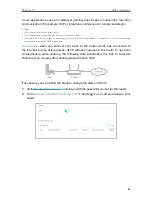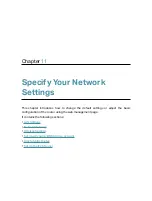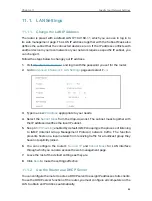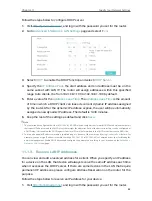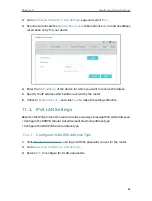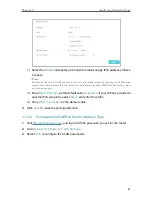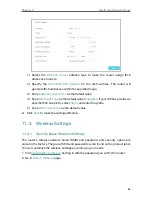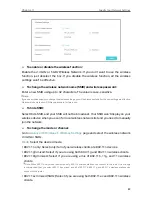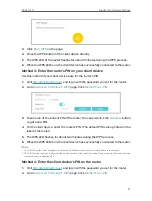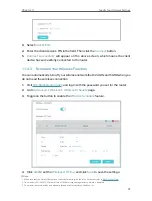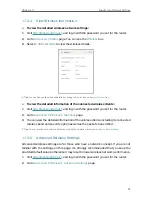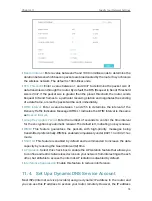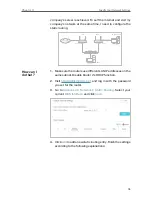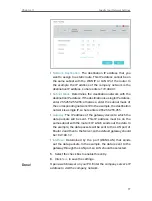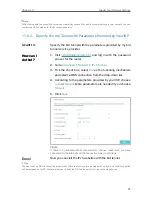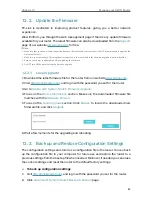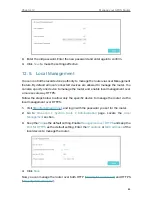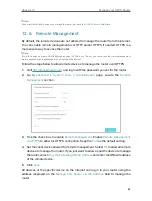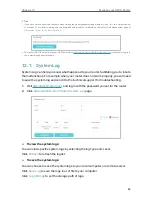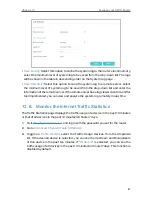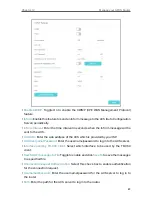
75
Chapter 11
Specify Your Network Settings
can change any time and you don’t know when it changes. In this case, you might need
the DDNS (Dynamic Domain Name Server) feature on the router to allow you and your
friends to access your router and local servers (FTP, HTTP, etc.) using domain name, in
no need of checking and remembering the IP address.
Note:
DDNS does not work if the ISP assigns a private WAN IP address (such as 192.168.1.x) to the router.
To set up DDNS, please follow the instructions below:
1
Visit
http://tplinkmodem.net
, and log in with the password you set for the router.
2
Go to
Advanced
>
Network
>
Dynamic DNS.
3
Select the
DDNS service provider
(Dyndns or NO-IP).
4
Log in with your DDNS account, select a service provider and click
Go to register ...
Enter the username, password and domain name of the account (such as lisa.ddns.
net).
5
Click
Log in
and
Save
.
Tips:
If you want to use a new DDNS account, please Logout first, then login with the new account.
11 5 Create Static Routes
A static route is a pre-determined path that network information must travel to reach
a specific host or network. Data from one point to another will always follow the same
path regardless of other considerations. Normal internet usage does not require this
setting to be configured.
Visit multiple networks and multiple servers at the same time.
For example
, in a small office, my PC can surf the internet, but I
also want to visit my company’s server. Now I have a switch and
another router. I connect the devices as shown in the following
figure so that the physical connection between my PC and my
I want to:


